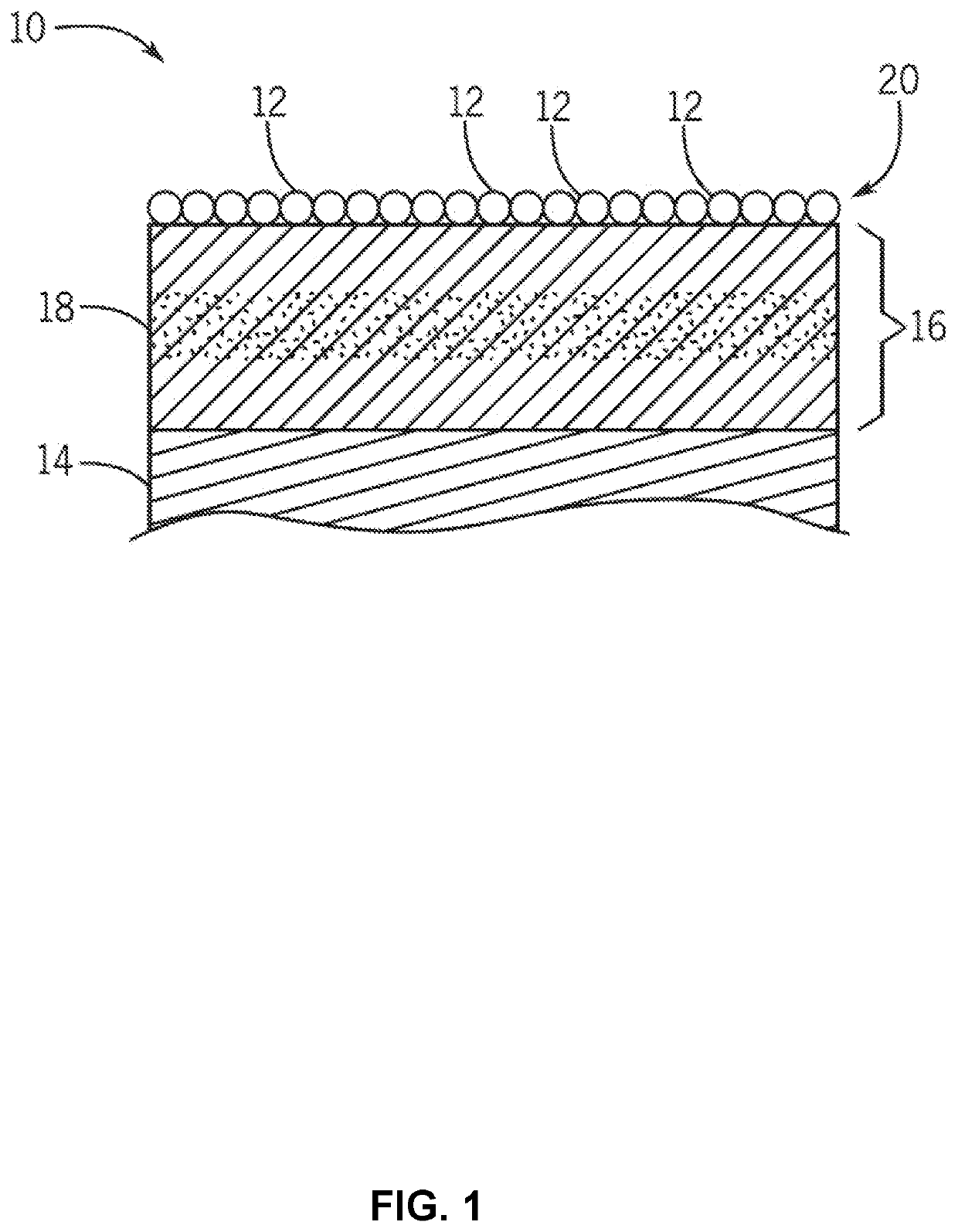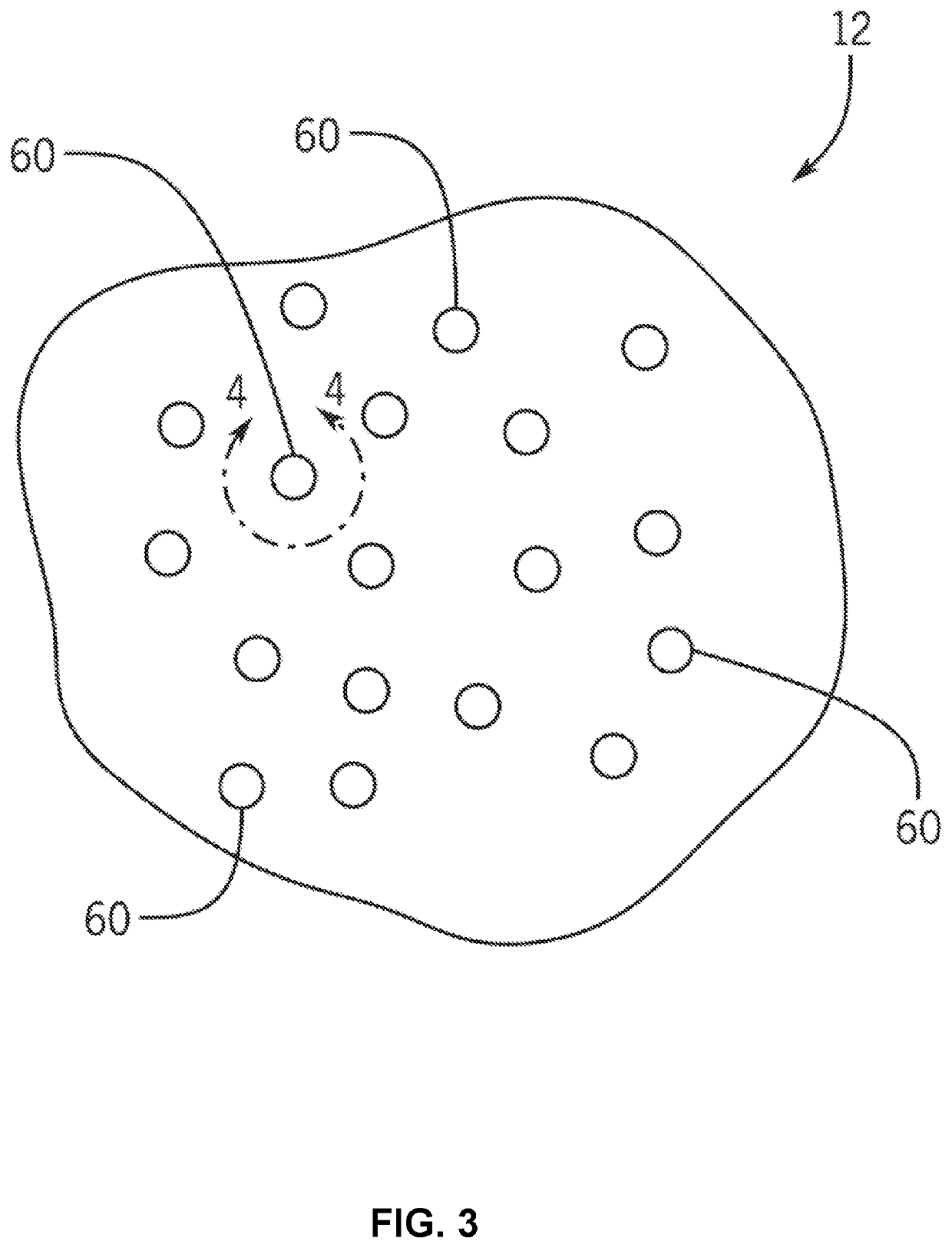Hybrid coating for roof applications
a technology for roofs and hybrid coatings, applied in the direction of roofing, roofing coverings using flexible materials, coatings, etc., can solve the problems of increasing cooling costs, reducing the service life of the roof, so as to improve the cooling efficiency of the roof system, improve the performance, and improve the effect of solar reflectivity
- Summary
- Abstract
- Description
- Claims
- Application Information
AI Technical Summary
Benefits of technology
Problems solved by technology
Method used
Image
Examples
example 1
[0051]Blends of 25 wt. % siloxane and 75 wt. % DuPont® ST-110 copolymer were coated on aluminum silicate granules at different levels. Coating levels of a mixture of water, siloxane, and the copolymer included 0.26 wt. %, 0.33 wt. %, 0.63 wt. %, 0.66 wt. %, 1.31 wt. %, and 1.56 wt. %. About 60% of the mixture was water and about 40% of the mixture was a solid. As a result, the final coating levels of the granule after drying were 0.10 wt. %, 0.13 wt. %, 0.25 wt. %, 0.26 wt. %, 0.52 wt. %, and 0.62 wt. %. A control of a mixture of siloxane-based compound and silane-based compound without a fluorinated copolymer (Wacker Chemle AG SILRES® BS3003) was coated on an aluminum silicate granule at 0.93 wt. %.
example 2
[0052]The coated aluminum silicate granules of Example 1 were tested for long-term oil repellency. A bath of naphthenic oil was prepared. The granules were placed in a naphthenic oil bath by carefully spreading the granules on top of the surface of the naphthenic oil. The weight percent of granules that sink in the oil bath is tracked over 28 days, starting from 30 minutes after placing the granules in the naphthenic oil bath. The weight percent of granules that sink is calculated from the weight of the granules that sink divided by the weight of all granules.
[0053]FIG. 7 shows the results of the long-term oil repellency test with the sink percentage of the granules on the y-axis and days in the oil bath on the x-axis. The control started with near 10 wt. % of granules sinking in the oil bath. Over the course of 28 days, more and more control granules sink, up to 60 wt. % after 28 days. By contrast, granules coated with blends of siloxane and copolymer showed close to 0 wt. % granul...
example 3
[0054]The coated aluminum silicate granules of Example 1 were tested for solar reflectivity trends under simulated aging conditions. The granules were exposed to thermal conditions typical on a commercial low-slope roof. Samples were assembled by applying granules to an SBS-modified bituminous membrane and then measured for initial solar reflectivity and periodically measured for solar reflectivity over time with exposure to dark oven thermal aging at 80° C.
[0055]The bituminous membrane was prepared by die cutting a controlled SBS-modified membrane using a 3.0-oz tin cup. Then the membrane was removed from the cup and secured in the lid of the tin cup. For large samples of granules, a sample splitter was used to pare down the size of the sample in order to maintain a representative particle size distribution. The granules were placed in a new 3.0-oz tin and hand rotated several times in different rotational directions to insure the granules were not size segregated. Samples were pre...
PUM
| Property | Measurement | Unit |
|---|---|---|
| particle size | aaaaa | aaaaa |
| reflectivity | aaaaa | aaaaa |
| solar reflectivity | aaaaa | aaaaa |
Abstract
Description
Claims
Application Information
 Login to View More
Login to View More - R&D
- Intellectual Property
- Life Sciences
- Materials
- Tech Scout
- Unparalleled Data Quality
- Higher Quality Content
- 60% Fewer Hallucinations
Browse by: Latest US Patents, China's latest patents, Technical Efficacy Thesaurus, Application Domain, Technology Topic, Popular Technical Reports.
© 2025 PatSnap. All rights reserved.Legal|Privacy policy|Modern Slavery Act Transparency Statement|Sitemap|About US| Contact US: help@patsnap.com



